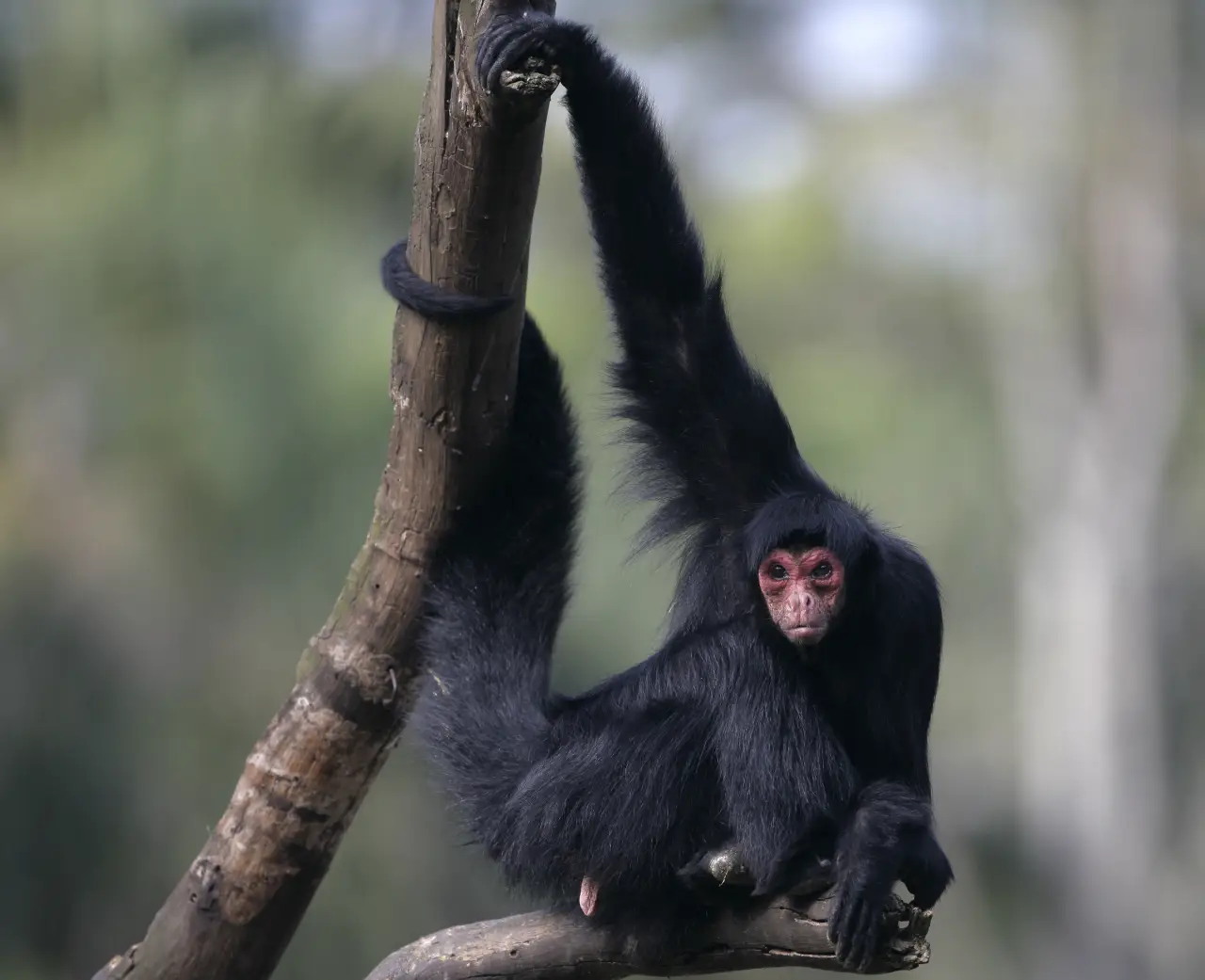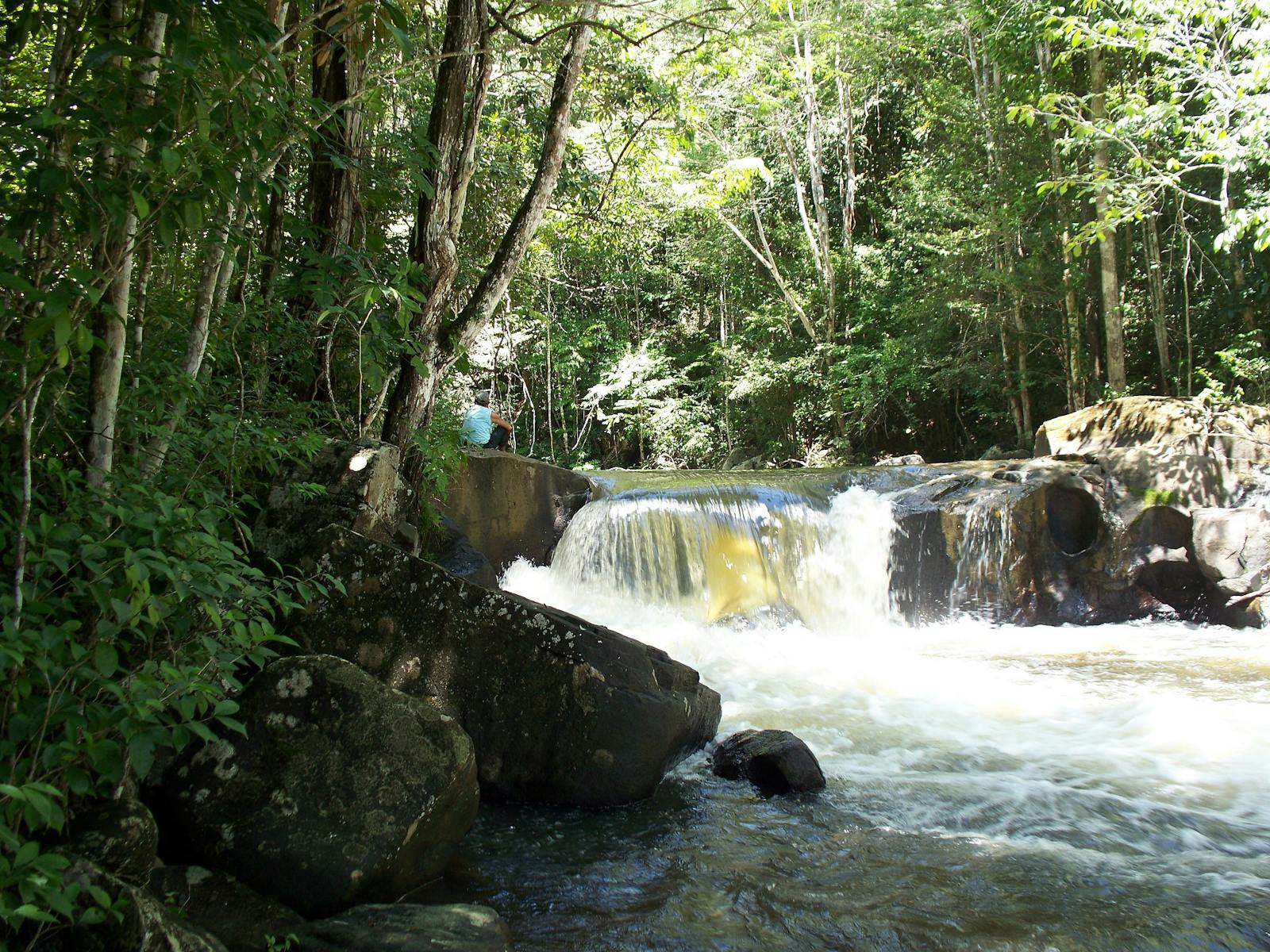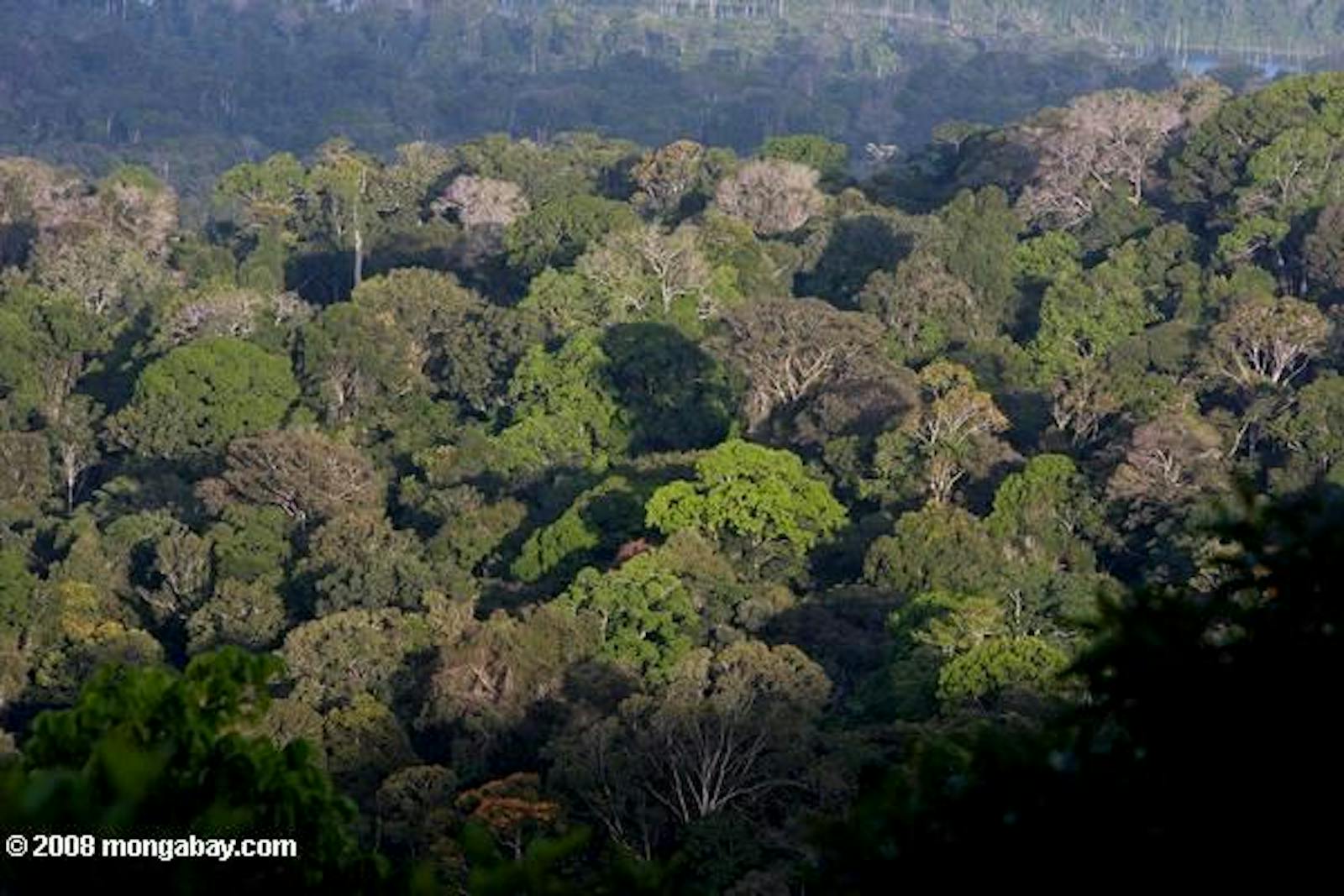Guianan Lowland Moist Forests
The ecoregion’s land area is provided in units of 1,000 hectares. The protection goal is the Global Safety Net (GSN1) area for the given ecoregion. The protection level indicates the percentage of the GSN goal that is currently protected on a scale of 0-10.
Bioregion: Guianan Forests & Savanna (NT21)
Realm: Southern America
Ecoregion Size (1000 ha):
47,932
Ecoregion ID:
465
Conservation Target:
95%
Protection Level:
4
States: Guyana, Suriname, France, Brazil, Venezuela
The Guianan Lowland Moist Forests represent one of the largest continuous tracts of relatively pristine lowland tropical rainforests in the world. This ecoregion is characterized by high species richness and local endemism, as well as relatively intact ecological processes.
The Guianan cock-of-the-rock is one of the most conspicuous species in the forests, adorned with brilliant orange plumage that it occasionally displays on branches among the rock enclaves of the Guianan Shield region of northern Amazonia.
%20Almir%20Candido%20de%20Almeida.webp)
The flagship species of the Guianan Lowland Moist Forests ecoregion is the Guianan cock-of-the-rock. Image credit: Almir Almeida, Creative Commons
During the breeding season, males aggregate in groups called leks and display in complex courting “rituals” for onlooking females. When not on display, they can be seen perched on hanging vines looking for fruits and small lizards and at the same time looking out for birds of prey that their conspicuous plumage attracts.
This region is located on the northeastern coast of South America. The Amazon basin lies to the south and the Orinoco borders on the west. The southern boundary is formed by the watershed of the Acarai Mountains and Serra Tumucumaque. A small portion to the east in Brazil and parts of Venezuela comprise the western limit.
The climate in these forests is generally hot and humid and is strongly influenced by the northeastern trade winds and the Intertropical Convergence Zone. Precipitation varies throughout the region ranging from 2,000–4,000 mm/year.
Vegetation is characteristically tropical seasonal evergreen or moisture tolerant lowland and submontane forest, with marsh forest along rivers, montane forest, and isolated savannas and hills. The flora of this area is rich, and these multi-tiered forests can reach up to 40 m with distinct layers.

Red-faced spider monkey
Since the arrival of the first explorers and biologists, this area has been recognized as an important center of biological diversity with historic taxonomic significance.
Mammalian richness is high, with at least 225 species described in Guyana alone, of which 121 are bats. Although the endemism of mammals in this ecoregion is not high at the species level, there are several species found primarily in this ecoregion, including marsupials like the opossum, bats, primates like the red-faced spider monkey, an olingo, and many rodents.
Bird diversity is high with over 668 species recorded in Suriname, and 786 species in Guyana. Several threatened raptors, including the harpy eagle and the crested eagle, occur in this ecoregion. The herpetofauna of this region includes 3 caimans, 4 amphibians, 43 lizards, 88 snakes. and 10 non-marine turtles.

Black Caiman. Image Credit: Whaldener Endo, Creative Commons
Threatened reptiles include the black caiman and the yellow-headed sideneck turtle. Additionally, several color morphs of the poison dart frog species complex are among the endemic amphibians in the ecoregion.
Plant endemism and richness are high in the Guianan lowlands, and presumably in the greater Guianan Shield, with an estimated 8000 species of vascular plants, 50% of which may be endemic.
Human colonization of the interior has only just begun in this ecoregion, as have conservation efforts. One obstacle to conservation initiatives is that this ecoregion encompasses five countries, with five separate cultures, languages, and government agendas.
However, management and conservation do occur nationally with French Guiana, Guyana, and Suriname estimated at about 80% of natural habitats intact.

Harpy eagle
Another consideration is Indigenous land claims, but due to low population densities, the traditional Amerindian lifestyle has proven sustainable and is conducive to environmental conservation. There are a number of nature reserves in Guyana, Suriname, and French Guiana which offer varying degrees of protection.
Central Suriname Nature Reserve is the largest protected area in the Guianan Shield, accounting for almost 10% of Suriname, and is a UNESCO World Heritage Natural Site.
Illegal Gold Mining and logging expansion are the most serious causes for concern. Recent increases in gold mining have severely impacted streams and surrounding landscapes with polluted runoff and mercury contamination.
As well, Guyana is the second-largest exporter of wild birds in South America, while other wildlife is also exported commercially and together may constitute a threat to the persistence of many species.
However, stringent quotas currently exist which, with proper research and enforcement, may limit the effects of this threat.
The priority conservation actions for the next decade are to 1) inhibit the logging of these forests; 2) ensure that mining practices are kept to a minimum with strict regulations, and 3) ensure adequate enforcement against illegal wildlife trade.
Citations
1. Schipper, J., L.K. Burton, P. Teunissen. 2018. Northern South America: Guyana, Suriname, French Guiana, northern Brazil, and eastern Venezuela. https://www.worldwildlife.org/ecoregions/nt0125. 30 July 2018
2. Hilton-Taylor C. 2000. The IUCN red list of threatened species. Gland, Switzerland and Cambridge, U.K.
3. Lim, B. K., and M. D. Engstrom. 2001. Species diversity of bats (Mammalia: Chiroptera) in Iwokrama Forest, Guyana, and the Guianan subregion: implications for conservation. Biodiversity and Conservation 10:613-657.




